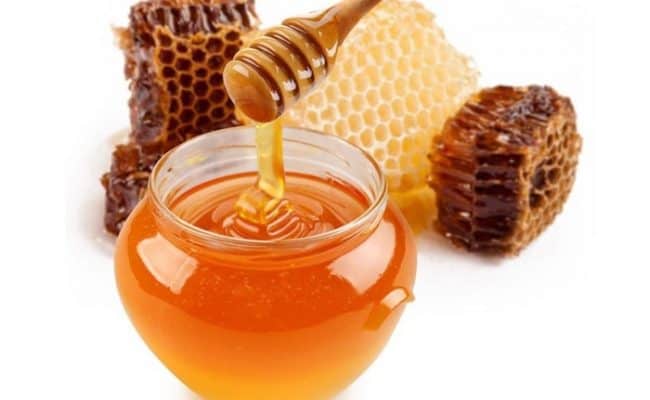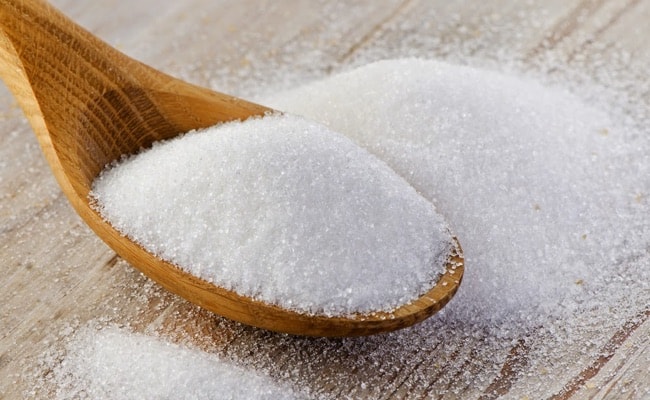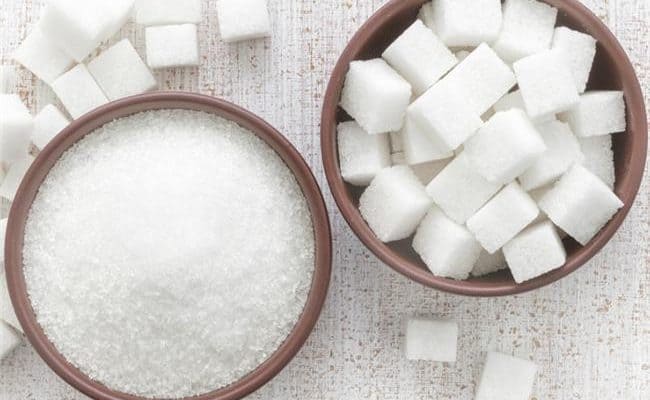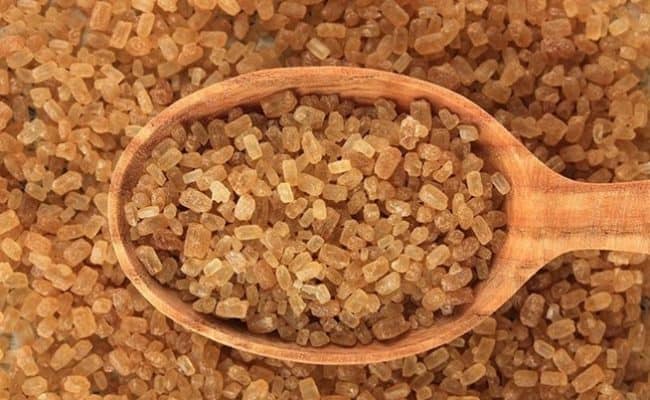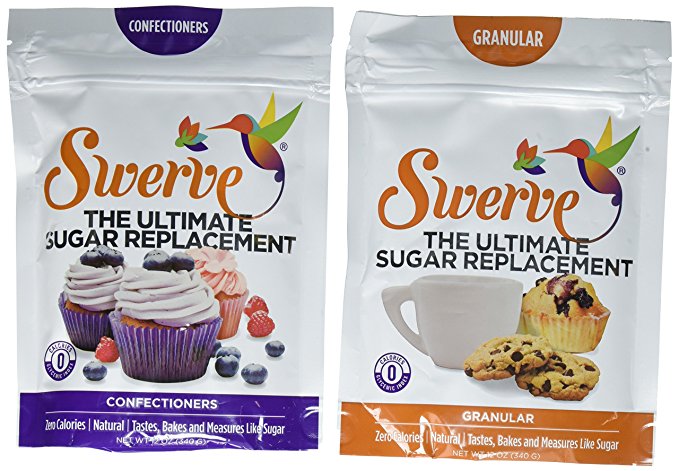
Swerve sweetener can be considered safe for most people, but it should not be eaten in excess. Swerve is a combination of oligosaccharides, erythritol and derivatives from citrus. It doesn’t leave a bitter aftertaste like other sugar alternatives and is considered calorie free.
Sugar is one of the most popular ingredients in food in the US. On average, a typical American consumes about 152 pounds of sugar per year which is almost 3 pounds of sugar in a week. This amount is well over the recommended 10% of daily calories added sugar should be in the diet.
Getting too much sugar in the diet is a source of empty calories that can increase risk for weight gain, type 2 diabetes, cardiovascular disease and possibly other chronic diseases. Sugar can hide in many forms and can be in foods you wouldn’t suspect like condiments, commercially made bread and frozen entrees.
What is an alternative for consuming sugar? Artificial sugars were put on the market to enjoy sweet without calories or influencing blood sugar. Not all artificial sweeteners are the same, and there is some controversy with using artificial sweeteners.
Even “natural” sugar alternatives, such as Swerve, may have some potential draw backs. In the end, whether it’s real sugar or sugar alternatives, moderation is important for overall health.
How is swerve sweetener made?
According to swervesweet.com Swerve is made from ingredients from fruits and starchy vegetables. It is calorie free and does not impact blood sugar levels after consuming.
Using Swerve in place of sugar can be simple because you can use it in a 1 to 1 ratio replacement for sugar. For example, if a recipe calls for a cup of sugar, you can replace it with a cup of Swerve.
Swerve is made basically by fermenting glucose. The fermentation process creates sugar alcohols.
Sugar alcohols do not actually have alcohol, but the fermentation process results in chemical alteration of the glucose molecules. The result for this process is the sugar alcohol erythritol.
The process to make Swerve also involves enzymatic alteration of ingredients from starchy root vegetables. The result is producing something called oligosaccharides.
Oligosaccharides are also considered a source of prebiotics which can act as fuel for beneficial gut bacteria probiotics.
Natural flavor from citrus is added to the erythritol and oligosaccharides to complete the Swerve product.
Erythritol compared to other sugar alcohols
Erythritol is only one type of sugar alcohol. Sugar alcohols in general are usually not considered calorie free, only reduced calorie. Therefore, consuming a lot of sugar alcohols can potentially provide a source of calories you may be unaware of.
Swerve is calorie free because of the combination of ingredients, and erythritol specifically is considered calorie free.
Sugar alcohols are in many chewing gum or mouth products because they are not digested by bacteria in the mouth which is a cause of tooth decay.
Consuming sugar alcohols in excess is known to cause bloating and diarrhea. Therefore, eating sugar alcohols in moderation is recommended.
Some sugar alcohols remain in the intestines longer which can pull water into the intestines. Eating too much erythritol may also cause nausea (1).
Swerve and digestive health
Erythritol used in Swerve has a high digestive tolerance compared to other sugar alcohols. Sugar alcohols may cause digestive upset with some people, but erythritol is generally considered easier on the digestive tract.
However, erythritol in excess could still act as a laxative because it readily leaves the small intestine quickly and gets absorbed quickly. It may also cause nausea in high doses.
Those with irritable bowel syndrome (IBS) or other digestive disorders can be highly sensitive to oligosaccharides and sugar alcohols.
Therefore, consuming Swerve may not be recommended. If you are following a low FODMAPS diet, consult your healthcare team before consuming.
Swerve and weight regulation
Sugar alternatives are considered an aid for weight loss because they are replacing sugar which has 4 calories per gram.
Sugar alternatives can provide less than 4 calories per gram and can be considered calorie free like Swerve.
However, some research suggests consuming sugar alternatives, especially in excess, may not turn out to be beneficial for weight loss. Some of the research is conflicting as well as opinions of health professionals.
For example, a 2016 article (2) suggests lack of appetite suppression and reward response with sugar alternatives may cause people to search for more food to fill this void left.
It’s like the sugar alternatives don’t send the signal to the brain that something sweet has been consumed, so the brain still craves more.
Consuming low-calorie foods with sugar alternatives may also create the justification you can eat more because a food is lower in sugar which can lead to higher food intake.
Sugar alternatives can also have a negative effect on resting metabolic rate and gut bacteria.
On the other hand, a 2016 review (3) suggests short term studies have shown consuming low energy sweeteners in place of sugar led to lower body weight and reduced energy intake.
While some research seems conflicting, more research is needed to clarify impact sugar alternatives have on health. There may also be wide variability on how different sugar alternatives impact the body.
The bottom line for any sugar alternative is they should be consumed sparingly and in moderation.
Conclusion: Is Swerve sweetener safe?
Swerve sweetener can be considered safe for most people, but it should not be eaten in excess. Swerve, like real sugar, should be used sparingly in the diet.
Swerve is a combination of oligosaccharides, erythritol and derivatives from citrus. It doesn’t leave a bitter aftertaste like other sugar alternatives and is considered calorie free.
Some people may be sensitive to high intakes of erythritol or oligosaccharides. Erythritol in high doses can cause nausea or have a laxative effect. If you have IBS or other intestinal conditions, consult with your healthcare team before consuming Swerve.
Regardless of the choice of sweetener, cutting back on the sweet level of our food choices can be healthy. A typical Western diet has sugar added to many foods that don’t need it, and most people consume sugar in foods you wouldn’t guess.
Trading sugar for a sugar alternative doesn’t give you the green light to consume as much as you want of a food or drink with a sugar alternative.
